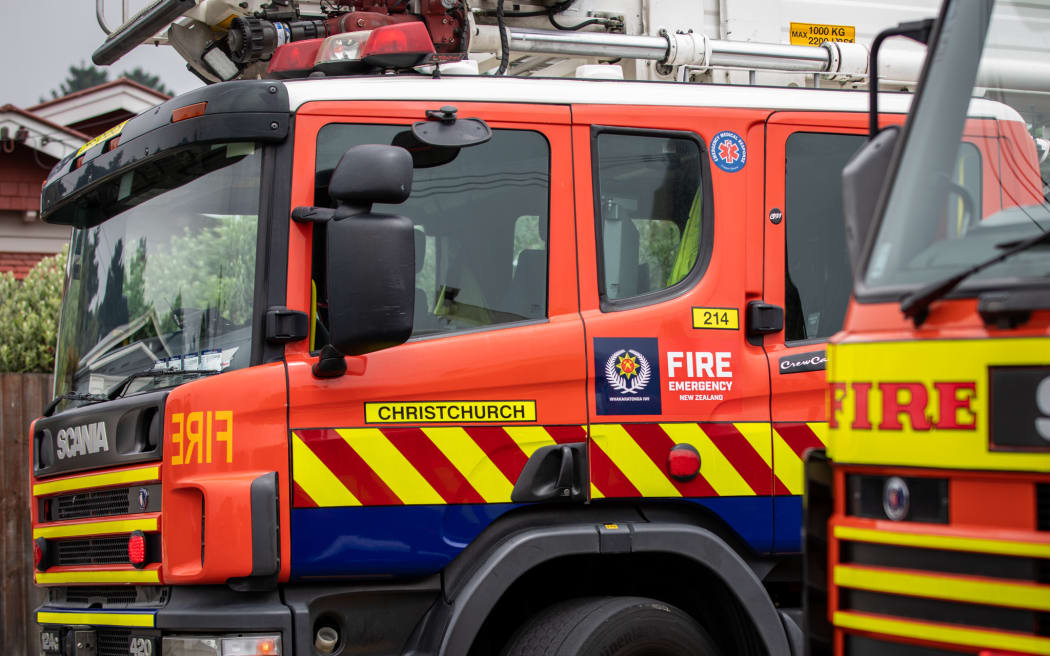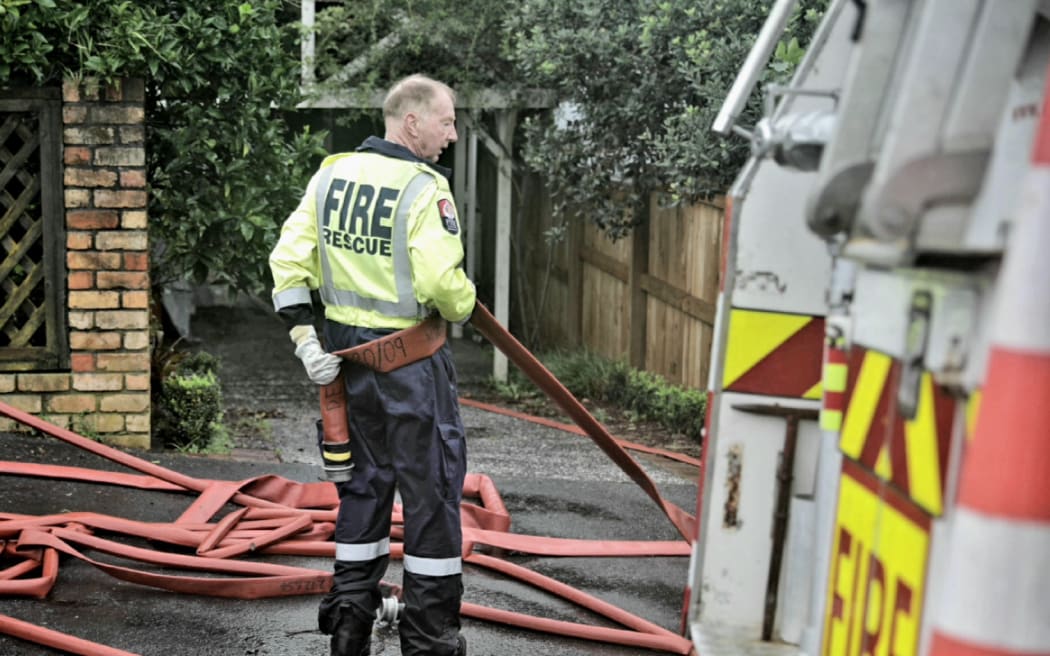Seven fire trucks have been left damaged - several by sucking water into their engines - during Auckland's floods.

Photo: RNZ / Nate McKinnon
The damage led to six vehicles being towed off the road.
Fire and Emergency was warned two years ago the air intakes were set too low and should be shifted higher, but has not done it. Fonterra has managed recently to modify its milk tankers to cope with floods.
Firefighters scrambling in Mangere, one of the hardest hit suburbs in Friday's deluge, had to deal with their key truck breaking down.
"My understanding is they weren't driving through massive flood puddles, they were driving through puddles which they reasonably thought that they would be able to drive through and the engines have failed," professional firefighters' union's Auckland president and City Station fire chief Terry Bird said.
"The air intake is very low on ... some appliances in particular, and when you drive through a puddle of water it's possible to draw that air up into the engine and cause damage and the engine will just stop working."
The Mangere truck was driven into a workshop and is still there. Six others had to be towed in.
Three have been repaired, with two of them back in service.
But trucks from Titirangi, Onehunga and Papatoetoe are out with engine damage.
Last night FENZ said its Ōtāhuhu vehicle had returned to the station the same day. The Kaukapakapa vehicle had gone back to the station. The Kaukapakapa Station had been flooded.
The Auckland City vehicle had been serviced and was ready to return. The Titirangi fire engine was off the road with engine damage, as was the Onehunga vehicle and the Papatoetoe one likely had engine damage.
Mangere had flood problems but was currently having non-flood related work done, FENZ said.
Terry Bird said this was unacceptable for the public who relied on these.

Photo: RNZ / Nick Monro
"Had they wanted to call back more people, they didn't have many trucks which they can put them into ... it would have been less than six.
"It does raise the issue of whether or not we have enough spare vehicles available at short notice."
Need for resilience
It should be possible to modify a few trucks to cope, Bird said.
"We're going to have more of these flooding events and we need to have resources which are resilient."
FENZ said it had 141 appliances across the city and its relief fleet of 16 was used.
"We have continued to respond to incidents in all areas as all stations with trucks out of service were covered from our relief fleet," FENZ said.
"It has not affected our ability to respond."
Known risk
FENZ has known its trucks were vulnerable.
Back in 2020, floodwater damage doused a fire truck in Whangārei during a rescue attempt.
Drivers had been told by managers to avoid water over just 10cm deep - this was the current directive, too - but back then, the driver had no choice, Whangārei union president Paul Ballantine said.
"At that moment, the officer felt that life was at risk and he was prepared to put policy aside and try and assist these people," he said.
"Unfortunately, it sucked up the water through the air intake and they had to stop in the floodwaters and it was actually towed out later on."
Another truck was called in, and took a longer way around to make the rescue, causing a short delay.
FENZ looked into this. A memo RNZ has seen from a July 2021 regional meeting shows firefighters suggested it should raise the air intakes. Bird said he attended this meeting.
"Highlighted that there is a problem, not only for Northland but for other appliances elsewhere," the memo said.
"Suggest air intakes need to be moved.
"If the air intake is at bumper level and the water level is 100mm then there are going to be issues.
"Need formal feedback from Mike Moran."
'Looking at options'
National fleet manager Mike Moran told RNZ yesterday that "we have not raised intakes but are looking at options to improve the wading performance of our fleet".
He did not say what options.
Neither Bird nor Ballantine were aware of FENZ investigating or doing anything further.
"The warning signs have been there for a while, yeah, like, personally I've been asking for a number of years," Ballantine said.
There is a precedent to modify the trucks: Fonterra got Volvo to make mechanical changes to its milk tankers over the last few years to guard engines against floodwaters, Fonterra said.
Bird said it did not help that Auckland fire truck drivers did not get proper training or guidance on driving in floodwaters.
FENZ said it had a driver training module that covered this that it had told firefighters to do
Moran said union reps had signed off on the fire truck specifications.
It was not just air intake that affected "wading depth" for trucks, he added in a statement.
FENZ was "experienced" at responding to floods, as was the Fire Service before it, he said.
Its search and rescue teams had helped people during the Auckland floods, and it was now testing the use of rafts "for the current and exceptional North Island floods".
"Specialist water rescue expertise adds an extra layer of safety to everyone involved."
Also, Takapuna fire station's ground floor has been yellow-stickered with flood damage, but firefighters are still working from upstairs.
"The location was not known to be prone to frequent floods," FENZ said.
Crews at the damaged Kaukapakapa station have been temporarily relocated.
A settlement reached to end industrial conflict late last year included setting up joint working parties between the union and FENZ to look at the types of boots, helmets and firetrucks that are used, "including the type and number of specialist appliances".




